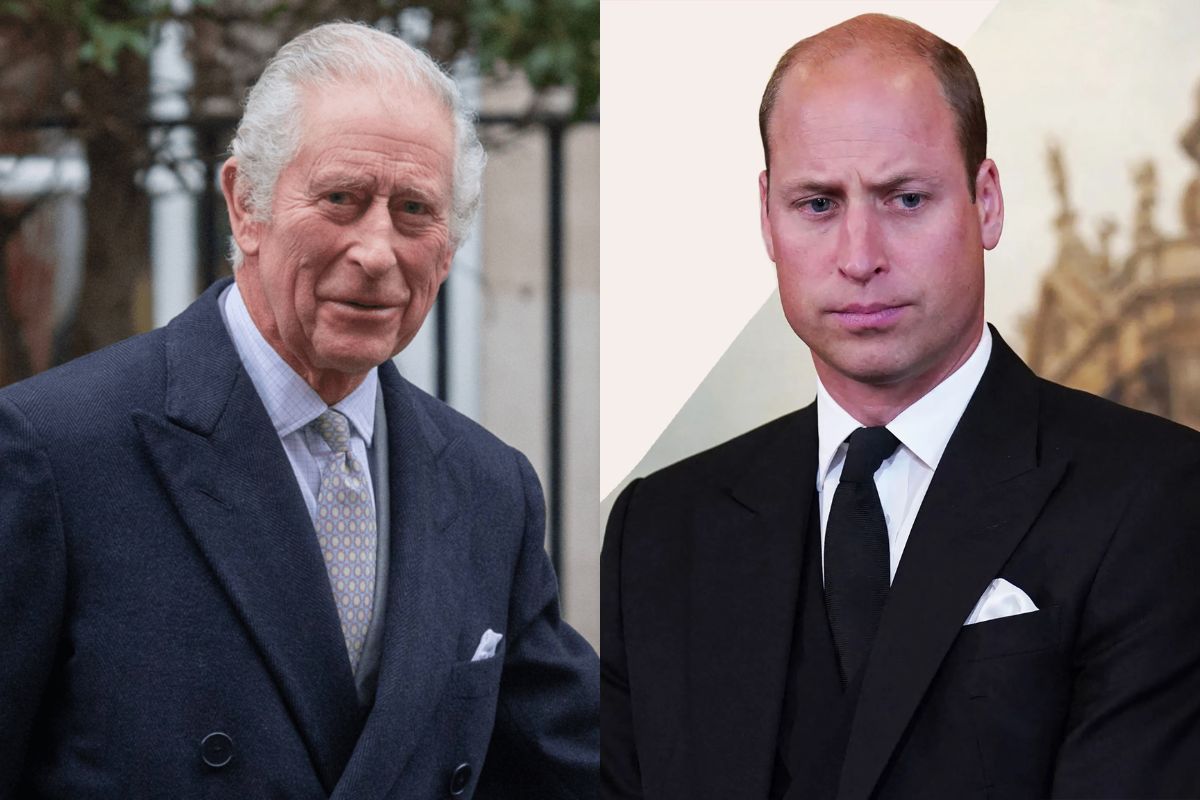Deep within the storied walls of Buckingham Palace, a new storm is brewing that threatens to unravel some of the intricate threads binding the British royal family.
King Charles III, the stalwart monarch of the realm, finds himself ensnared in a web of complex emotions as a significant decision by his eldest son, Prince William, and a contentious move by Queen Camilla shake the very foundation of their union.
Prince William has recently made headlines with a controversial decision to remove Annabel Elliot, Queen Camilla’s sister, from the Royal payroll. For nearly two decades, Elliot had been receiving substantial payments for her role as the chief interior designer of the Duchy of Cornwall’s property portfolio.
Her work included updating and decorating the royal family’s residences, ranging from Cornwall to the Isle of Scilly, with her annual payments ranging from £119,000 to £82,000.

Additionally, she was reimbursed for expenses related to furniture and decor, which varied from £7,000 to £90,000.
The recent financial disclosures reveal that Elliot was not compensated for her services during the 2023 to 2024 period. This decision marks the first time in almost twenty years that her role has been terminated. Sources close to the palace indicate that while the decision is not a reflection of her work, it is seen as a necessary step towards streamlining the monarchy’s processes. The move is reportedly part of Prince William’s broader efforts to modernize and simplify royal operations.
The termination of Elliot’s contract has led to speculation about its impact on the relationship between Prince William and Queen Camilla. Despite a rocky start, Camilla and William have demonstrated mutual respect over the years. However, the removal of her sister from the payroll has reignited concerns about potential rifts within the royal family.
Royal commentator Emily Andrews has highlighted the complicated dynamics between Camilla and the princes. When Camilla and King Charles married in 2005, Prince William and Prince Harry were still coming to terms with her presence in their lives. Andrews notes that Camilla, once seen as a controversial figure due to her relationship with Charles, eventually won the support of William and Harry, though the journey was fraught with challenges.
Camilla’s relationship with the princes, especially Prince Harry, was reported to be difficult initially. Andrews reflects that Camilla’s role evolved from being a stepmother to a supportive figure in their lives. As Camilla took on the title of Queen, William was there to support her, particularly in her first major royal outing following the late Queen’s endorsement of her title.
Despite these personal and professional tensions, the professional relationship between Annabel Elliot and the royal family appears to remain strong. King Charles III continues to value Elliot’s expertise, recently entrusting her with the design of a new visitors’ center and restaurant at Bulmer Castle.
:max_bytes(150000):strip_icc():focal(750x137:752x139)/king-charles-queen-camilla-balmoral-079b7f7533414737957d5bca3b0c1db3.jpg)
This project, which was publicly unveiled this summer, underscores the ongoing respect for her contributions.
The most recent public appearance of Queen Camilla and Annabel Elliot was at the prestigious Wimbledon tournament on July 10th. Their joint appearance highlighted the continuity and collaborative nature of their professional relationship, despite the recent changes.
As the royal family navigates these turbulent waters, it remains to be seen how these decisions will affect their relationships and the future dynamics within the monarchy. For now, the echoes of history continue to resonate through Buckingham Palace, as King Charles, Prince William, and Queen Camilla grapple with the ramifications of these significant changes.
